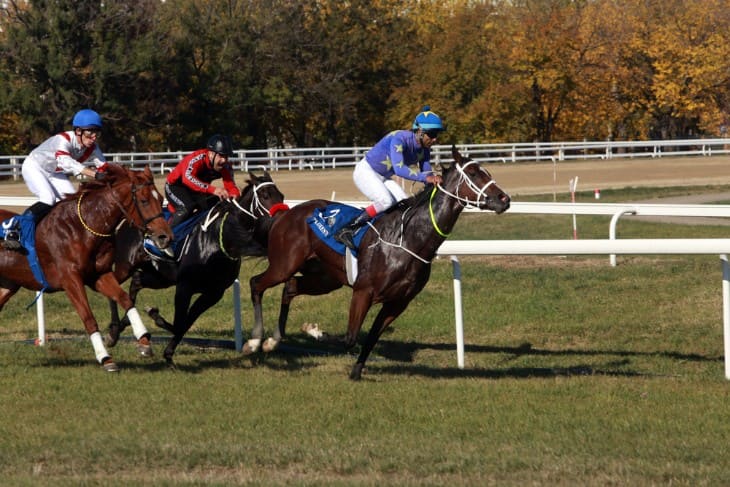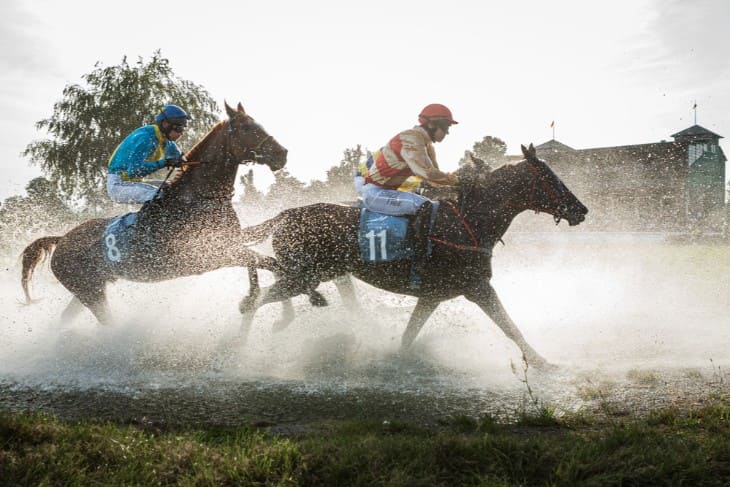Introduction
People often associate horse racing with exciting races and enthusiastic crowds. Yet, at its core, betting plays a significant role. Central to this betting system is the principle "Non Runner No Bet" (NRNB). Understanding this concept is essential for all bettors, regardless of their experience. A thorough knowledge of NRNB can enhance the betting experience for both regulars and occasional visitors.
Decoding the 'Non Runner' Phrase
Before immersing ourselves in the NRNB phenomenon, it's imperative to crystallise the meaning of 'non-runner'. At its core, if a horse, despite all prior indications, fails to make it to the starting line, it's classified as a 'non-runner'. Various circumstances can precipitate this outcome: unexpected injuries that may arise just before a race, adverse weather conditions rendering a track hazardous, or trainers making eleventh-hour decisions based on the horse’s health, mood, or a sudden shift in race strategy.

History and Evolution of Non Runner No Bet
The concept of NRNB has its origins rooted in the evolution of betting practices in the horse racing industry. As betting became more mainstream and widespread, the need to protect and secure punters' interests became evident. NRNB emerged as a response to the outcry from bettors who faced losses due to unforeseen horse withdrawals. Over the years, the rule has been refined and has gained acceptance across major bookmakers. Its adoption marks a significant milestone in making horse racing betting more punter-friendly and equitable.
Comparing NRNB to Other Betting Safety Measures
While NRNB offers a protective layer to punters, it isn't the only safety measure in the betting world. There are other provisions like "Best Odds Guaranteed" where punters are paid out at the starting price if it's higher than the price they took. Another is "Rule 4", which comes into play when a horse is withdrawn from a race after betting has begun, adjusting the odds of remaining horses. However, while these measures also offer security to bettors, NRNB stands out because of its simplicity and the direct protection it offers against the specific scenario of a non-running horse.
Tips for Newbies: Navigating the NRNB Landscape
For those new to the world of horse racing betting, understanding and making the most of NRNB can be a game-changer. Here are some key pointers:
- Read the Terms Carefully: Not all bookmakers may offer NRNB for all races. It's often reserved for major events or specific circumstances. Ensure you're betting under NRNB terms.
- Stay Updated: Keep a close eye on your chosen horse's status. While NRNB protects your stake, knowing about a potential withdrawal early can allow you to re-strategise.
- Use It Strategically: NRNB often comes into play closer to the race date. By understanding when it's likely to be offered, you can plan your bets accordingly, potentially taking advantage of early odds.
Why Non Runner Non Bet Makes Sense
- Protection: This is the cornerstone of NRNB. The assurance that you won’t watch your money disappear on a horse that never had a shot because it never began the race.
- Betting Strategy: Equipped with the NRNB shield, bettors can craft nuanced early betting plans. They can secure favourable odds early on, all while basking in the security of this unique betting safety net.
- Increased Confidence: For those new to the betting arena, the very notion of losing money on a non-participant horse can be overwhelming. NRNB acts as a confidence booster, encouraging more people to try their hand at betting.
- Leveraging Information: Horse racing isn't merely a game of luck; it's also about timely, accurate information. The NRNB provision empowers punters to harness early intelligence without the usual pitfalls associated with hasty betting decisions.
Mechanics of Non Runner No Bet
To truly capitalise on this provision, one must be acquainted with its finer details. Imagine you’ve taken a calculated risk on a horse, buoyed by the NRNB clause. If, for unforeseen reasons, your chosen steed abstains from the race, your stake is handed back. However, a crucial thing to remember is that bookmakers typically unveil the NRNB feature as significant race events draw closer. The terms, nuances, and activation timeframes of this rule might exhibit variance across different bookmakers, making it essential for bettors to meticulously peruse the stipulated terms and conditions.

Betting Varieties Under NRNB
NRNB isn’t a one-size-fits-all rule; it gracefully extends across the betting spectrum:
- Single Bets: This is betting in its most unadulterated form – you back one horse in a singular race. With NRNB as your companion, should your horse fail to make an appearance, you're not left empty-handed.
- Each-Way Bets: A sophisticated wagering method. Here, bettors essentially split their bets: one chunk goes on the horse winning, and another on it securing one of the top slots. With NRNB, should your horse refrain from running, you get the 'win' part of your stake back, while the 'place' bet continues its journey.
- Accumulator Bets: Tailored for the daring, this bet involves putting money on a series of horses across multiple races. If NRNB is your ally and one horse abstains, that specific leg of your accumulator is rendered null, but the rest of your complex bet soldiers on.
A Few Caveats to Consider
Despite its manifold benefits, NRNB comes with its fair share of intricacies:
- Altered Odds: As a trade-off for the safety they provide, bookmakers might present slightly less enticing odds when the NRNB flag is flying.
- Timing Matters: NRNB is generally ushered in as major racing events loom on the horizon. If a horse backs out before this safety net is active, the comforting embrace of NRNB will remain elusive.
- Limited Availability: NRNB isn't omnipresent. Its privileges are often bestowed exclusively on marquee races and grand events. It’s paramount to verify whether your wager comes under its protective umbrella.
- Potentially Reduced Wins: While your principal is shielded with NRNB, this might come at the subtle cost of slightly toned-down potential returns.
Illustrating Non Runner Non Bet with Real-world Scenarios
Picture John, an ardent horse racing aficionado. He spots an advantageous each-way bet for the Grand National. The odds seem promising, but in an unfortunate twist, the horse incurs an injury. Without the protective shade of NRNB, John's stake would have vanished. However, because he wisely chose an NRNB covered bet, he's refunded for the 'win' part, while the 'place' bet stays in contention.
Similarly, visualise Lucy, who goes all out with an accumulator bet covering a series of horses for the Cheltenham Festival. If just one of her chosen horses decides to sit out and she's safeguarded by NRNB, that particular leg of her accumulator gets cancelled, but the remainder of her bet remains vibrant.
In Conclusion
To bet well in horse racing, it's important to know about the NRNB rule. This rule helps betters make smarter and safer choices. While betting on horse races is exciting, it's always good to do it with knowledge and care.







